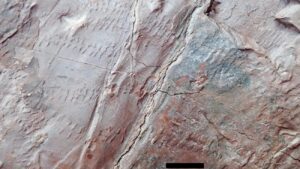National Museum of Ethiopia in Addis Ababa – History Revealed
Nestled in the heart of Addis Ababa, the National Museum of Ethiopia is a treasure trove of the country’s rich history and culture. This museum is a must-visit for anyone interested in understanding Ethiopia’s past, from its ancient civilizations to its modern-day cultural tapestry. Whether you’re a history buff or just curious about Ethiopia, the museum offers a fascinating glimpse into the nation’s heritage.
What to See
The National Museum of Ethiopia is home to an impressive collection of artifacts that span the country’s long history. One of the most famous exhibits is “Lucy,” the 3.2-million-year-old hominid skeleton that has captured the world’s attention. Lucy’s discovery was a groundbreaking moment in the study of human evolution, and seeing her remains is a highlight for many visitors.
Beyond Lucy, the museum houses a wide array of archaeological finds, including ancient tools, pottery, and art. The ethnographic section showcases traditional clothing, jewelry, and household items from Ethiopia’s diverse ethnic groups, providing insight into the country’s cultural diversity. The museum also features contemporary art pieces, offering a glimpse into the modern artistic expressions of Ethiopian artists.
A Bit of History and Interesting Facts
The National Museum of Ethiopia was established in 1944 and has since become one of the most important cultural institutions in the country. It was initially housed in a small building but moved to its current location in 1958. The museum’s collection has grown significantly over the years, thanks to numerous archaeological discoveries and donations.
One interesting fact about the museum is that it not only focuses on Ethiopia’s past but also plays a role in preserving its present. The museum actively engages in research and conservation efforts, ensuring that Ethiopia’s cultural heritage is protected for future generations.
Another fascinating aspect of the museum is its role in the discovery of Lucy. In 1974, a team of archaeologists led by Donald Johanson unearthed Lucy’s remains in the Afar region of Ethiopia. This discovery was pivotal in understanding human evolution, and Lucy has since become an iconic figure in the study of our ancient ancestors.
How to Get There and Tips for First-Time Visitors
The National Museum of Ethiopia is conveniently located in the heart of Addis Ababa, making it easily accessible for visitors. If you’re staying in the city, you can reach the museum by taxi or public transportation. Many hotels also offer shuttle services to popular tourist destinations, including the museum.
For first-time visitors, it’s a good idea to allocate a few hours to explore the museum thoroughly. The exhibits are spread across several floors, and there’s a lot to see and learn. Guided tours are available and can provide valuable insights into the exhibits, enhancing your understanding of Ethiopia’s history and culture.
The museum is open daily, but it’s always a good idea to check the opening hours before your visit, as they may vary on holidays. Photography is allowed in most areas, but be sure to respect any signs indicating restrictions.
In conclusion, the National Museum of Ethiopia offers a captivating journey through the country’s history, from ancient times to the present day. With its diverse collection of artifacts and engaging exhibits, it’s a place where history truly comes alive. Whether you’re a seasoned traveler or a first-time visitor, the museum promises an enriching experience that will deepen your appreciation for Ethiopia’s unique heritage.








